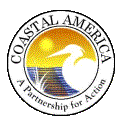



_JPG.jpg)
Salem Wildlife Management Area
Restoration Location: Salem,NJ
Project Purpose: Over the next three years, we will improve water quality, fish spawning habitat, foraging opportunities for wading birds, anadromous fish, and waterfowl, and nesting habitat for priority shrub/scrub passerines through restoration of 30 acres of agricultural fields and 10 acres of Phragmites native habitat on the Salem Wildlife Management Area.
Brief Description: The project site is within the Salem River WMA, the Mannington Meadows Important Bird Area, the Delaware Bay Estuary Ramsar Site and is within one mile of the Supawna Meadows National Wildlife Refuge (NWR) which provides foraging grounds to the Pea Patch Island Rookery, the largest rookery of colonial wading birds on the east coast, north of Florida, a waterbird focal area for BCR 30. The forests of the Bayshore region provide important breeding, stopover and wintering habitat for shorebirds, passerines and raptors throughout spring and fall migration. In addition, waterfowl congregate in large numbers off-shore during the winter months, providing foraging opportunities for the Peregrine Falcon (state-endangered) and Bald Eagle (state-endangered).
Agricultural fields adjacent to and within riparian and wetland habitats will be treated to control invasive plants, primarily Phragmites. A dense cover of native tree, shrub and grass species will be then be planted to capture the site and compete with Phragmites, which will reduce future invasions at the site and provide a diversity of foraging, nesting, and resting opportunities to fish and wildlife as well as improvements to water quality entering the Meadows. Long-term benefits to water quality will be further achieved through establishment of a forested riparian corridor from maturation of the planted trees and shrubs that will stabilization the soil, reducing sedimentation loads and will provide stop-over habitat for migrating passerines as well as suitable habitat for the resident American Bald Eagle.
Resource Values/Project Outputs: Implementation of the proposed project will increase reproduction of prey fish such as mummichog and thereby improve overall foraging opportunities for interjurisdictional fish including priority andadromous fish like striped bass as well as enhance a food source and foraging opportunities for priority wading birds.
The project will contribute to several goals of the NJ Wildlife Action Plan (WAP) for the Southern Piedmont Plains Region including: improving IBAs, maintaining and restoring estuarine wetland habitat for the benefit of Bald Eagles, colonial waterbirds, and migratory waterfowl that forage in and around wetlands and maintaining natural biodiversity and ecosystem function by controlling invasive and overabundant species.
Cost/Budget: Total Project Cost: $100,700. Budget: Labor (design/implementation, coordination) $64,500; Travel - $2000; Supplies/Equipment - $3000; Contractor - $31,200.
List of Partners: US Fish and Wildlife Service - $11,200; William Penn Foundation - $41,000; Atlantic City Electric - $1000.
CWRP/Contribution: $25,000 to cover contractor costs, supplies, and project design.


